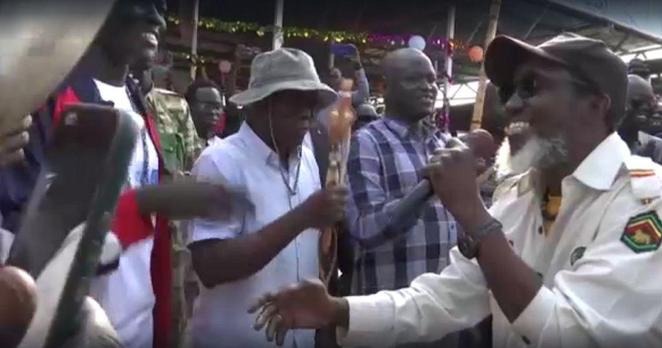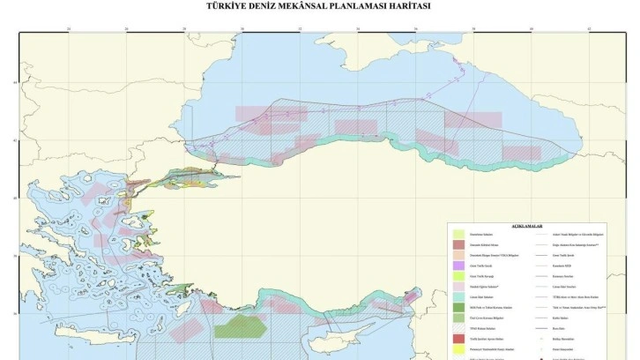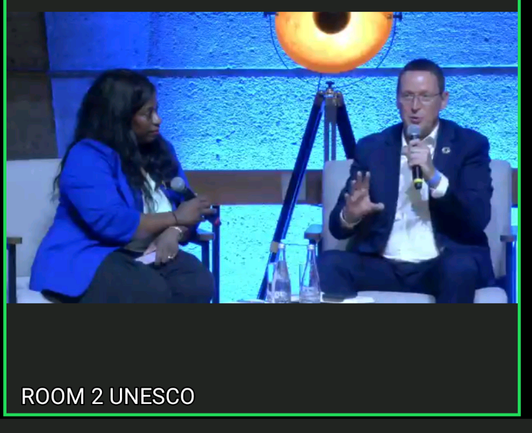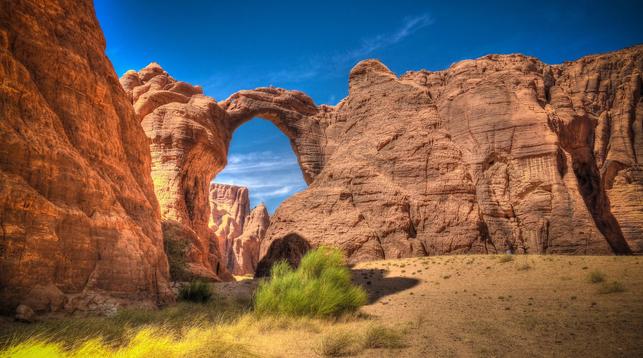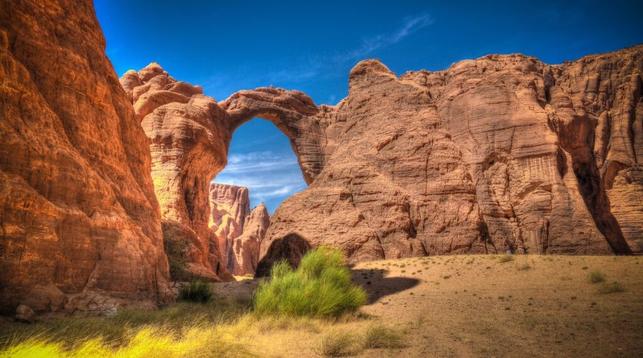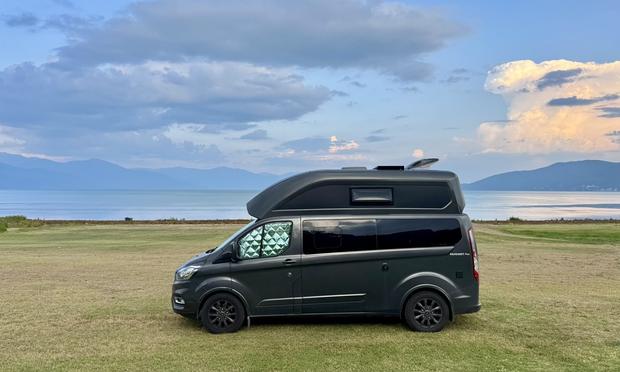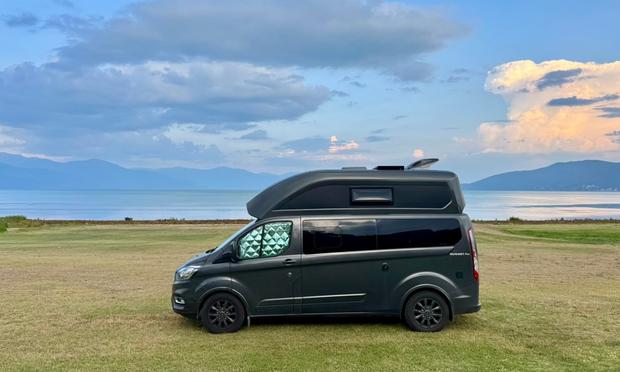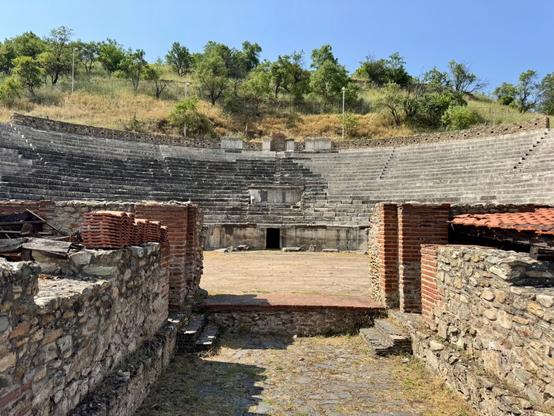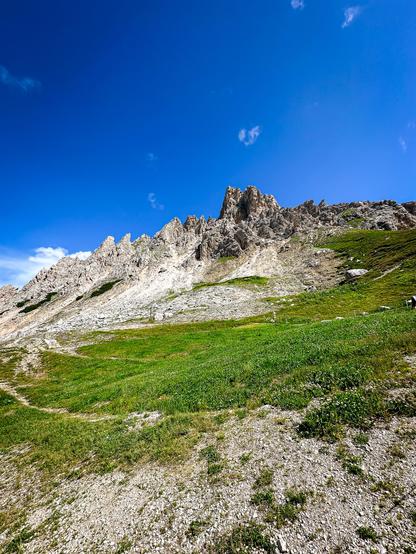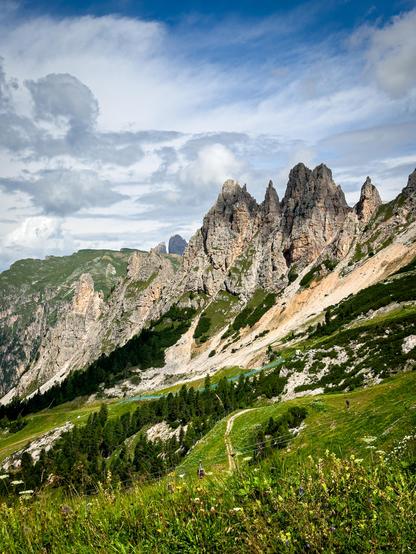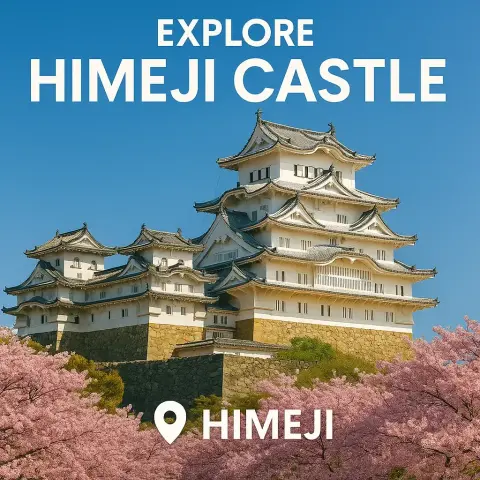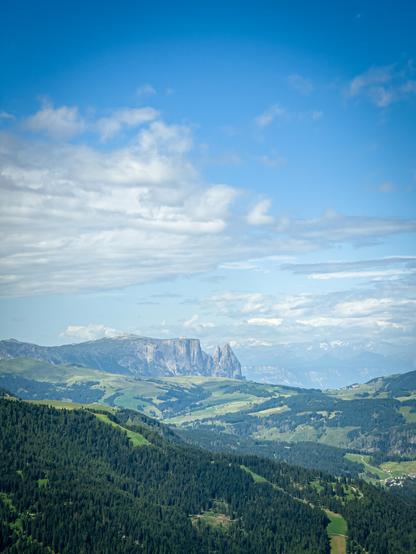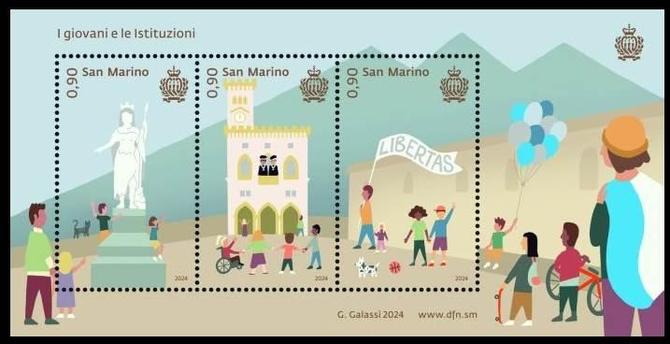United Nations harnesses power of music for peace in South Sudan http://newsfeed.facilit8.network/TLS0m9 #UnitedNations #Peace #SouthSudan #UNMISS #UNESCO
#UNESCO
Mavi Vatan tescillendi! UNESCO'dan Türkiye kararı: Tescil sürecinin tamamlanmasıyla, Türkiye Deniz Mekansal Planlaması Haritası MSPGlobal platformunda yayımlanarak uluslararası erişime açıldı.
Bu gelişmeyle, Türkiye, deniz ve kıyı alanlarının sürdürülebilir kullanımına yönelik mekansal planlamasının uluslararası düzeyde tanınırlık kazanmasını ve resmi statüye kavuşmasını… https://www.eshahaber.com.tr/haber/mavi-vatan-tescillendi-unesco-dan-turkiye-karari-234964.html?utm_source=dlvr.it&utm_medium=mastodon EshaHaber.com.tr #MaviVatan #UNESCO #DenizPlanlaması #Türkiye #SürdürülebilirKullanım
⚠️🇺🇦Cultural center in Kherson region completely destroyed by Russian war criminal’s drone strike (PHOTOS and more) https://www.ukrinform.net/rubric-ato/4006029-cultural-center-in-kherson-region-completely-destroyed-by-drone-strike.html #Ukraine #UNESCO #UN #ECHR #ICC #ICJ #Hague #UnitedNations #Mastodon #NukesForUkraine #Germany #France #Italy #OSCE #PACE #CoE #SouthKorea #Press #News #Taiwan #Media #Japan #USA #US #UK #EU #NATO #UnitedStates #UnitedKingdom
#EuropeanUnion #russiaUkraineWar
#11yrInvasionofUkraine #RussiaIsATerroristState #TrumpIsARussianAsset
Building Digital Bridges: Technology, Diplomacy, and Global Cooperation
Here is PANAfricanSSI's view at the forum:
The future is gloomy for IT jobs and many others that are not technically engaging. Machine learning and industrial automation are the threats. Indeed, the AI mantra is that it is cutting-edge yet imperfect.
It will not be long before all AI solutions and services are enriched to replace humans at their jobs with AI agents.
UNESCO's Tech Diplomacy Forum saw diplomats, industry leaders, and non-governmental bodies thoroughly navigate AI's prospects, challenges, and uncertainties. The Oxford-style debates reiterated all the potentials and concerns.
MZANGAF (no longer FAANG) are using AI and shaping it based on Western etiquette. Emerging economies will have to use the services according to their ToS because they lack the comparative technical prowess to develop their own.
Regulations are lagging behind in favour of the big techs, as we continue to see today's mindlessness.
Having expressed our views, the PANAfricanSSI is working hard to contribute to the AI communities and benefit the underserved. Some of our recent efforts were infrastructure upgrades and testing existing solutions in translation, sentiment, summaries, workflow, interpretation, and many more.
In addition, we have deployed bridges for applying contexts to LLMs, interacting between AI models and apps, and interoperability of LLMs (Anthropic, OpenAI-compatible, etc.). We are further training models at several billions/quantisations and many more.
Join Us in shaping the future!
#unesco #africa #education #engineering #artificialintelligence #panafrican #technology
🏜️ Le Sahara cache encore des secrets…
Le plateau Ennedi au Tchad est un chef-d'œuvre de la nature : arches géantes, oasis perdues, peintures rupestres de 8 000 ans et crocodiles du désert 😮
📖 À découvrir sur 👉 https://www.2tout2rien.fr/le-plateau-ennedi-joyau-secret-du-sahara/
#Sahara #Tchad #UNESCO #Voyage #Nature #ArtRupestre #2tout2rien
Le plateau Ennedi, joyau secret du Sahara
https://www.2tout2rien.fr/le-plateau-ennedi-joyau-secret-du-sahara/
#désert #ennedi #imxok #neolithique #oasis #peinture #plateau #préhistoire #rocher #rupestre #Sahara #tchad #Unesco
https://unescowhstamps.blogspot.com
Prague, Czech Republic – UNESCO World Heritage Site
#UNESCO #PatrimonioMundial #WorldHeritage #Welterbe #Philately #Filatelia #Sellos #Stamps #Timbres #Philatelie #Briefmarken #UNESCOWorldHeritage #Prague #Praha
#PrazskyHrad #StareMestoPrazske #KarluvMost
⛔️🇺🇦Russian war criminals strike destroys church in Pokrovsk (more) https://www.ukrinform.net/rubric-society/4005808-russian-strike-destroys-church-in-pokrovsk.html #Ukraine #Mastodon #UNESCO #UN #Vatican #Rome #PopeLeo #UnitedNations #NukesForUkraine #Germany #France #Italy #OSCE #PACE #CoE #SouthKorea #Press #News #Taiwan #Media #Japan #USA #US #UK #EU #NATO #UnitedStates #UnitedKingdom
#EuropeanUnion #russiaUkraineWar
#11yrInvasionofUkraine #RussiaIsATerroristState #TrumpIsARussianAsset
We set out on a two-month long road trip through most of the Balkan states, hoping to make our way along the Adriatic and across Greece to the Aegean Sea. This log chronicles our return transit through Northern Macedonia.
👀 More? See https://curiositydrive.org/2025/06/18/adventures-in-north-macedonia/
#camperVan #europe #NorthMacedonia #nationalPark #nature #nomad #roadTrip #Romans #travel #unesco #vanLife
Adventures in North Macedonia
We set out on a two-month long road trip through most of the Balkan states, hoping to make our way along the Adriatic and across Greece to the Aegean Sea. This log chronicles our return transit through Northern Macedonia.
Coordinates
The southern lakes
An easy border crossing from Niki brought us into North Macedonia. Heraclea Lyncestis near Bitola is a city founded by Phillip II of Macedon in the mid 4th C. BCE, later falling under Roman rule and becoming a waypoint on the Via Egnatia—the road linking Byzantium and Rome. This compact archaeological site features the ruins of baths, a portico, several basilicas, an episcopal residence, city fountain (first photo), theatre (second photo), gymnasium, street and rampart—plus a small museum. An earthquake and Slavic invasions led to it being abandoned in the 6th C. CE. The centrepiece is a 100m-long narthex mosaic in the Great Basilica, dated to the late 6th C. CE and illustrative of early Byzantine art (third photo; only the central section is seen here). We later made camp at Oteševo in National Park Galichica on the marshy shore of Преспанско Езеро | Lake Prespa (fourth photo). From pitch we saw Pelecanus crispus | Dalmatian pelicans both on the water and in the air. One of the world’s largest flying birds at up to 15kg/ 3.2m wingspan (fifth photo), they also played a role in peacemaking. We also saw Microcarbo pygmaeus | the near-threatened pygmy cormorant, which has a Balkan stronghold on the lake (final photo).
Ohrid is a UNESCO-listed World Heritage site. Phillip II of Macedon determined that a fortress should be built on the hill above the lake in Lychnidos (Ohrid’s name in antiquity) and historian Livy confirms its existence in 209 BCE. Destroyed, rebuilt and upgraded multiple times under Roman, Byzantine, Slav and Ottoman rule, Ohrid had been capital of the First Bulgarian Empire under Tsar Samuel (976 to 1014 CE) and the castle thus became known as Samuel’s Fortress (first photo); it was extensively restored in 2003. A view from the battlements over the old town towards the new, where a promenade fronts the lake and tour boats solicit customers (second photo). At Plaošnik, the archaeological site of an early Christian centre, is the reconstructed 9th–15th C. Church of Saints Clement and Panteleimon, featuring striking brickwork and pristine frescoes (third photo). Lake Ohrid in the background is one of the oldest continuously existing lakes in the world (at around 2–3 million years old). The House of Krapche is a restored 19th C. family residence with a typical “top-heavy” facade used as a model for street lanterns in the old town—one hangs from the left side (fourth photo). After a lakeside lunch (“pepper salad” was literally three peppers on a plate!) we visited the Church of St. Sophia with its 11-13th C. frescoes (fifth photo) and the partially restored Hellenistic-era Ancient Theatre of Ohrid (final photo).
Mavrovo National Park
Heading towards Mavrovo National Park we experienced a “GPS hallucination”, trading lengthy roadworks/ potholes on the A2 for a road not even in service yet; a check of the terrain ahead plus visible land slips informed a decision to backtrack (first photo). Continuing on the A2, we reached the artificial Mavrovo Lake, established in 1953 with the “iconic” flood-prone Old Mavrovo (St. Nicholas) Church on its shore, seen here from the new Church of St. Nicholas (second photo). We felt underwhelmed and continued along the scenic Radika river canyon on good tarmac to the Monastery St. Jovan Bigorski (third and final photos). Founded in 1020 CE it was destroyed by the Ottomans in the 16th C. but restored in 1743 and expanded in 1812–25; it largely burned down in 2009 then underwent further restoration. The Macedonian Orthodox decor in the church was impressive. Fifteen minutes further into the valley, Elen Skok Bridge disappointed; of Ottoman construction, it was fenced off with barbed wire and neglect meant that vegetation overgrowth prevented any view of the arch from upstream or downstream. With hindsight, we’d trade Mavrovo National Park for more time at the Prespa/ Ohrid lakes.
Matka Canyon
There was more misadventure en route to Matka Canyon; we were served a traffic violation by police, but weren’t sure at the time if we were being scammed (see box-out, below). We arrived still somewhat flustered at the commercialized Matka Canyon just ahead of the Saturday crowds (first photo). We walked the 5km canyon trail to a point opposite the Vrelo Cave, where the path ended. We’d seen the native Argynnis paphia | silver-washed fritillary butterfly earlier in Europe, but it was in abundance on the trail (second photo). New to us though was Nemoptera sinuata | the sinuated spoonwing or lacewing, found in Balkan forests and open grasslands, or flying near river gorges (third photo). Matka Canyon Trail was about 5km/ 1.5h on foot; after a short but precarious descent on an unofficial route to the lakeshore, we boarded a water taxi to return—a 15min journey (final photo).
Getting stopped by the police
What happened?
We were behind another German van, both following a slow logging truck. The truck slowed right down and pulled over to margin of the road, which seemed to invite overtaking—despite there being a solid white line between the lanes. Drivers in North Macedonia (as throughout the Balkans) routinely ignore no-overtaking lines, and speed limits. The coast was clear, so one or two local vehicles and then both vans overtook the truck, crossing the no-overtaking line to do so. A car travelling in the opposite direction flashed his headlights at us in warning, despite there being no danger of collision due to his distance from us. Around the next corner, both German vans were stopped by uniformed police. They used translation on a phone to say we’d been stopped because we overtook a truck. There was no possibility of their having seen this—unless they had a drone in the air (unlikely), or perhaps a third party radioed ahead to them. They said the fine would be 250€, but then “If you have card, I can help you”, indicating if we paid now the fine would be reduced to 45€. They took licence details, issued a ticket, pulled out a card reader and we paid the on-the-spot fine of 23€. We got a written ticket, and a written receipt for payment. We signed both as requested, although they were written in Cyrillic, and were given copies. Meanwhile, the driver of the other van took out his phone and photographed the police car. The lead officer was upset, saying he could “not help you” to the other driver. We don’t know how their story ended.
What questions did this raise?
RAC note that in North Macedonia “Fines must be paid at a post office or bank and are reduced by 50% if paid within 8 days”. So if police don’t take fines directly, were these even police? If they were police, were they corrupt? Was the truck driver in on it, if it was a scam? Were they targeting foreign vehicles specifically? Do police now carry portable card readers? Was the safest course of action to pay the (relatively trivial) fine as the most expedient way to remove ourselves from the situation? Should we have lingered at the side of the road to support the occupants of the other van?
What should/ could we have done differently?
Should we have asked for an official ID? We could have asked „Може ли да се идентификувате? | Can you identify yourself? They should show an official badge and ID with a photo and serial number. Failure to provide identification would be a red flag, as would:
- Asking for cash without a receipt (didn’t apply here)
- Using threatening language to force you to pay immediately (all very civil with us, but was this the tone with the second driver?)
- Detaining you without a clear explanation (we got this in English on the officer’s phone).
If you’re unsure, you can say/ show „Би сакал/а да одиме во најблиската полициска станица.“ | I would like us to go to the nearest police station.
✳️ Tips and tricks
Departing the growing congestion in Matka Canyon, we made camp early on a nearby goat farm—where vigilance was required to keep our lunch from the resident rooster. Our host recommended a 5km return evening walk to the Holy Sunday cross visible from pitch. We were soon rewarded with views over the capital Skopje (first photo). Having gained the viewpoint just below the cross, we looked down into the canyon we’d visited earlier (second photo). We’d been accompanied by a dog most of the way, which an initially naked man occupying a tent at the viewpoint told us was from the local monastery (third photo); our canine protector was on a mission from God! On trail we saw more spoonwings and several native Amata phegea | the nine-spotted moth, also known as the yellow belted burnet (final photo).
Sunset cast an orange glow behind the mountains as we returned to pitch:
Sunset behind the mountains near SkopjeThe volcanic northeast
What is certain about “Kokino Megalithic Observatory” from the archeological evidence is that people made use of this volcanic hill near Kumanovo during the Bronze Age; findings suggest occupation from the 19th C. to 7th C. BCE. What is controversial is whether it functioned as an astronomical observatory and sacred site. Are the apparent notches in the rocks (first photo) aligned to solar/ lunar movements coincidentally, or by design? The site’s nomination for UNESCO World Heritage listing faltered on this uncertainty. Regardless, it offers superb views of the surrounding landscape (second photo). About an hour’s drive away, the town of Kratovo is located within a volcanic crater and has retained some of its Ottoman-era mining town stone bridges (third photo) and towers (final photo). Probably not worth the detour. We passed on the formations at nearby Kuklica, eroded volcanic tuff pillars in which some see dolls or houses.
From North Macedonia we’ll next explore Kosovo—but to get there we have to first enter Serbia.
North Macedonia: road trip essentials
- Entry requirement: Visa-free for up to 15 days (with temporary EU residence permit) or 90 days (as EU citizen); register with police within 24h of arrival/ de-register within 24h of leaving (it’s unclear how!)
- Road conditions: Variable; avoid mountain roads at night/ in bad weather
- Driving rules/ equipment: EU licence accepted/ IDP(1968) not required; speed limit is 130km/h motorway, 50km/h urban; speed camera warnings illegal; dipped headlights mandatory 24/7; winter tyres or snow chains mandatory 15 Nov–15 Mar
- Vehicle insurance: Cover via ADAC (International Motor Insurance Card/ “Green Card”: MK)
- Breakdown insurance: Cover via ADAC
- Travel/ health insurance: Cover up to 63 days trip total via ADAC; EHIC not valid
- Tolls/ road user charge: A1/ A2/ A4 motorways have tolls via booths using cash or card
- Emissions restrictions: No official LEZs
- Pitches: Camping grounds; wild camping generally tolerated
- Water: At camping grounds
- Toilet/ grey water disposal: At camping grounds
- Rubbish disposal: At camping grounds
- Shore power: At camping grounds
- Safety/ security: Risk of road traffic accidents & erratic driving/ wildfires/ earthquakes/ altitude sickness in some areas; photographing military/ government/ “strategic” areas illegal; use primary roads/ daytime driving only near Kosovo border
- EU data roaming: No; we didn’t buy an expensive eSIM, but used WiFi
- Currency: MKD (denar)
For more/ current info, see our preparatory checklists and consult the RAC/ ADAC and FCDO/ Auswärtiges Amt websites.
✳️ Tips and tricks
#2025 #camperVan #europe #nationalPark #nature #nomad #northMacedonia #roadTrip #romans #travel #unesco #vanLife
⛔️⚠️Russia’s culture genocide gets Nobel Aspirant’s blessing: Historic Center buildings in Odesa suffer most damage from Russian strike (PHOTOS and more) https://www.ukrinform.net/rubric-society/4005744-historic-center-buildings-in-odesa-suffer-most-damage-from-russian-strike.html #Ukraine #UNESCO #UN #ECHR #Canada #Vatican #Rome #PopeLeo #NukesForUkraine #Germany #France #Italy #OSCE #PACE #CoE #SouthKorea #Press #News #Taiwan #Media #Japan #USA #US #UK #EU #NATO #UnitedStates #UnitedKingdom
#EuropeanUnion #russiaUkraineWar
#11yrInvasionofUkraine #RussiaIsATerroristState #TrumpIsARussianAsset
Meet Hari: an autistic, minimally-speaking multilingual PhD student changing the landscape of disability research and advocacy
#autism #multilingual #disability #education #languagelearning #UNESCO
#Venezuela🇻🇪 denuncia el impacto de la guerra y la colonización en la diversidad cultural ante la #UNESCO
https://venezuela-news.com/venezuela-denuncia-el-impacto-de-la-guerra-y-la-colonizacion-en-la-diversidad-cultural-ante-la-unesco/
Val Gardena.
#dolomiti #instagood #alessandrogaziano #pictastravel #pictaslandscape #travel #italia #visioni #montagna #landscape #traveldiaries #Raw_community #Raw_Allnature #unesco #snap_community #nature #photooftheday #Italy #veroexplore #snap_mountains #natgeo #veroearth #photography #dolomitesvalgardena #mountainlifedolomiti #globalcapture #snap_community_member
Val Gardena.
#dolomiti #instagood #alessandrogaziano #pictastravel #pictaslandscape #travel #italia #visioni #montagna #landscape #traveldiaries #Raw_community #Raw_Allnature #unesco #snap_community #nature #photooftheday #Italy #veroexplore #snap_mountains #natgeo #veroearth #photography #dolomitesvalgardena #mountainlifedolomiti #globalcapture #snap_community_member
🏯 Discover the majestic beauty of Himeji Castle in Japan! 🌸 Immerse yourself in its rich history and stunning architecture. 🌅 Don't miss the chance to explore this UNESCO World Heritage Site! #HimejiCastle #JapanTravel #ExploreJapan #UNESCO #History #Architecture 🇯🇵 https://www.japantripideas.com/en/kansai/hyogo/himeji/attractions/castles/himeji-castle
Cảm xúc về nỉ không chỉ là nghệ thuật mà còn là câu chuyện về văn hóa. Nghệ thuật làm nỉ truyền thống ở Kyrgyzstan và Nội Mông truyền tải di sản linh thiêng qua từng tác phẩm. Đây là cầu nối quá khứ và hiện tại. #VănHóa #DiSản #NghệThuậtNỉ #UNESCO https://ift.tt/moF5ekW
Val Gardena.
#dolomiti #instagood #alessandrogaziano #pictastravel #pictaslandscape #travel #italia #visioni #montagna #landscape #traveldiaries #Raw_community #Raw_Allnature #unesco #snap_community #nature #photooftheday #Italy #veroexplore #snap_mountains #natgeo #veroearth #photography #dolomitesvalgardena #mountainlifedolomiti #globalcapture #snap_community_member
Val Gardena.
#dolomiti #instagood #alessandrogaziano #pictastravel #pictaslandscape #travel #italia #visioni #montagna #landscape #traveldiaries #Raw_community #Raw_Allnature #unesco #snap_community #nature #photooftheday #Italy #veroexplore #snap_mountains #natgeo #veroearth #photography #dolomitesvalgardena #mountainlifedolomiti #globalcapture #snap_community_member
https://unescowhstamps.blogspot.com
San Marino – UNESCO World Heritage Site
#UNESCO #PatrimonioMundial #WorldHeritage #Welterbe #Philately #Filatelia #Sellos #Stamps #Timbres #Philatelie #Briefmarken #UNESCOWorldHeritage #SanMarino
#MonteTitano #RepubblicaDiSanMarino
